 |
 |
 |
| |
Switch to INSTI more than offset negative effects of weight
gain on incidence of insulin resistance in people living with HIV
|
| |
| |
IAS 2021 July 18-22
Presenter: Jovana Milic
Authors: J. Milic * (1 ), S. Renzetti (2), D. Ferrari (3), S. Barbieri (1 ), M. Menozzi (4), F. Carli (4), G. Dolci (4), G. Ciusa (4), C. Mussini (1 ), S. Calza (2), G. Guaraldi (1 ).
Institutions: (1) Department of Medical and Surgical Sciences for Children and Adults, University of Modena and Reggio Emilia, Italy, Modena, Italy, (2) Department of Molecular and Translational Medicine, University of Brescia, Italy, Brescia, Italy, (3) Department of Surgical, Medical, Dental and Morphological Sciences, University of Modena and Reggio Emilia, Italy, Modena, Italy, (4) Department of Infectious Diseases, Azienda Ospedaliero-Universitaria Policlinico of Modena, Modena, Italy, Modena, Italy
"switching to INSTI reduced the risk of IR by 28.9%"
Abstract:
BACKGROUND: The objective was to evaluate incidence and predictors of IR in PLWH switching to INSTI in relation to weight gain (WG).
METHODS: This was a longitudinal matched-cohort study including PLWH attending Modena HIV Metabolic Clinic, Italy. Participants were divided into two groups: INSTI-naive and INSTI-switchers (INSTI-s) and matched for the duration of observational period and body mass index (BMI) at baseline. Three definitions of WG were used: delta increase of weight from the baseline visit to follow-up; an increase of 5% of weight; an increase of 7% of BMI. Outcome was IR. A mediation analysis was performed to test the mediation effect of BMI and weight change in the causal path between the switch to INSTI and the incidence of IR.
RESULTS: We analyzed 290 PLWH (67% males), 158 INSTI-s and 132 INSTI-n with the median age 47 (43-52) years. Median BMI was 22.6 kg/m2. Figure 1A shows that switching to INSTI reduced the risk of IR by 28.9% as the net result of the favorable direct effect of INSTI-s vs INSTI-n (32.1%) and the mediation effect of a potential harm of weight gain (4.7%). Similarly, Figure 1B shows that switching to INSTI reduced the risk of IR by 29.5% as the net result of the favorable direct effect of INSTI-s vs INSTI-n (32.2%), with the mediation effect of a potential harm of BMI gain (4.0%).
CONCLUSIONS: The protective effect of switching to INSTI more than offset the risk IR, induced by weight gain with a net result of 29%. Despite WG, INSTI still represent a metabolic friendly option in PLWH. These data contribute to a data driven definition of WG both in terms of weight or BMI quantification in relation to a clinically meaningful endpoint.
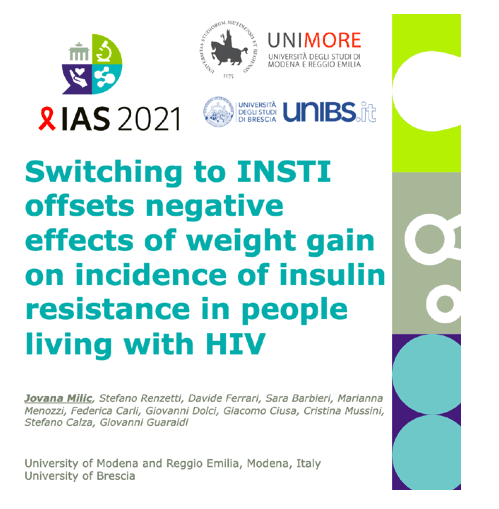
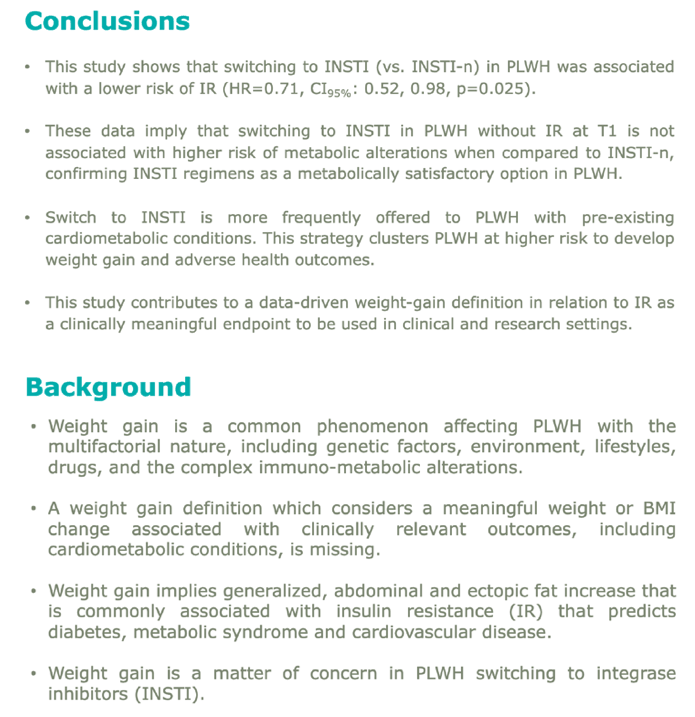
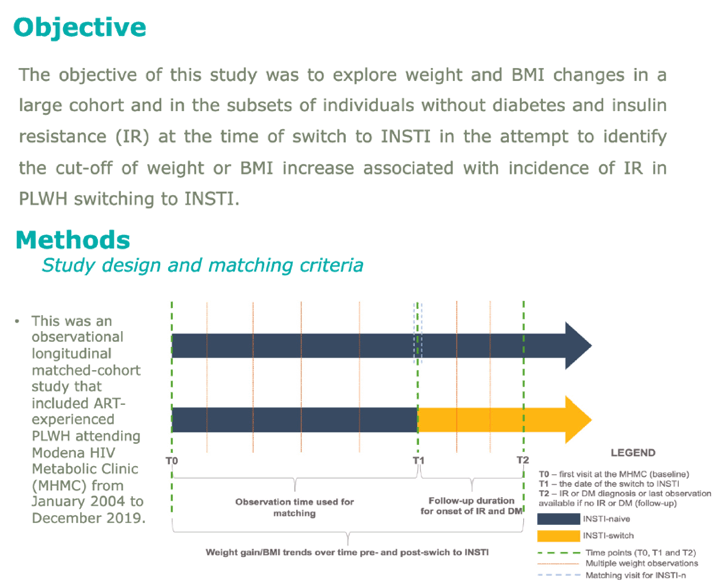
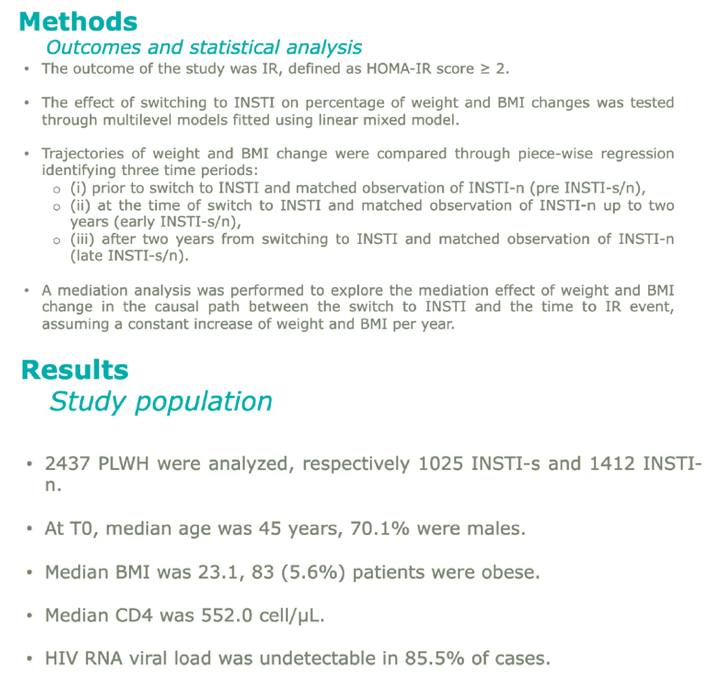
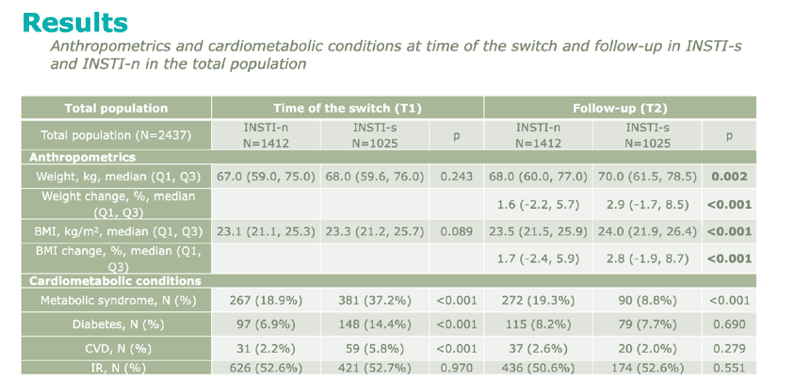
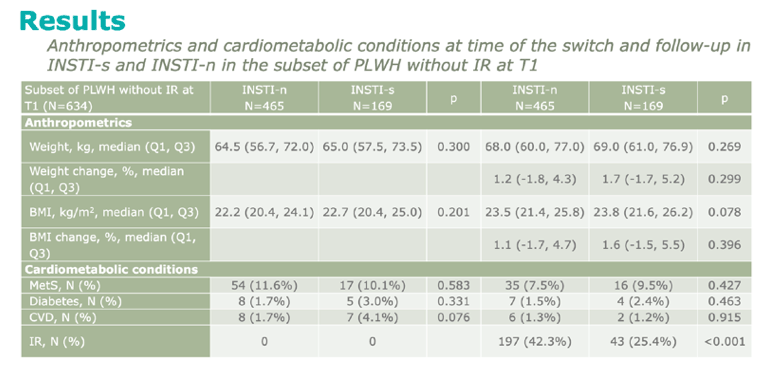
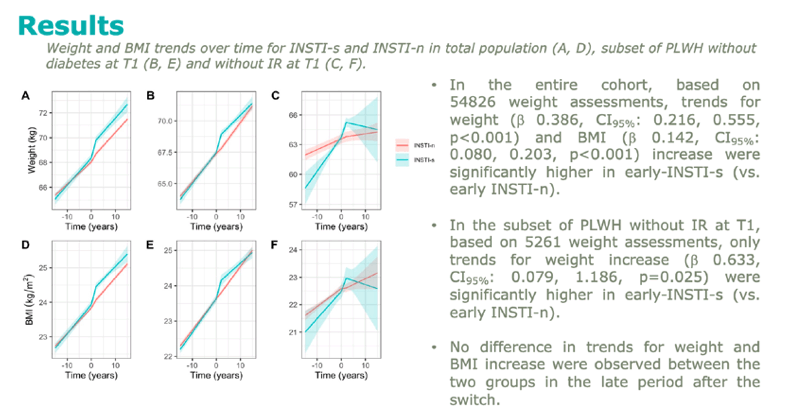
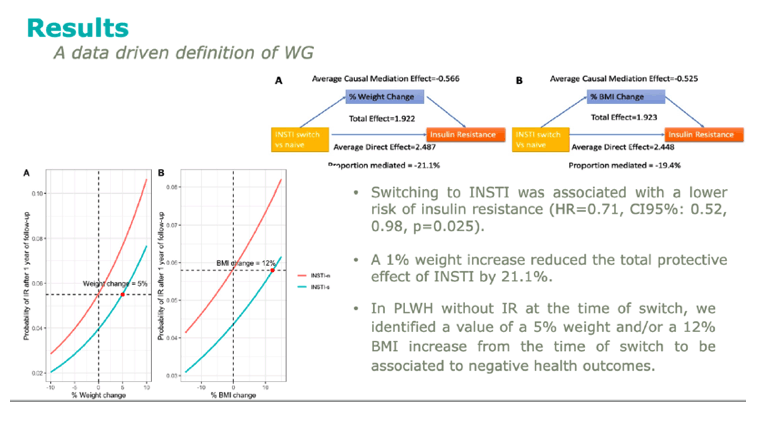
|
| |
|
 |
 |
|
|